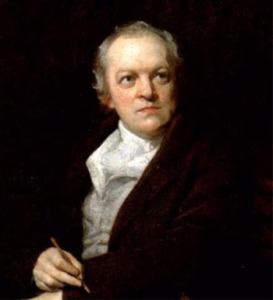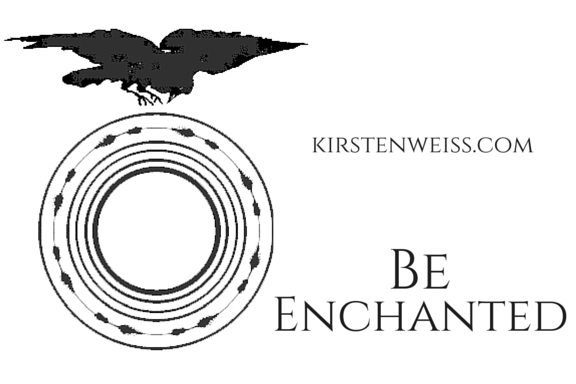 William Blake (1757-1827) took an avant-garde approach to art at a time when the establishment ruled, and for that he paid a price. He was a tradesman and a tradesman’s son, when tradesmen were not supposed to be making art, and he paid for it. He believed that poetry should be accessible to everyone, and not just the over-educated elite, and he paid for that too.
William Blake (1757-1827) took an avant-garde approach to art at a time when the establishment ruled, and for that he paid a price. He was a tradesman and a tradesman’s son, when tradesmen were not supposed to be making art, and he paid for it. He believed that poetry should be accessible to everyone, and not just the over-educated elite, and he paid for that too.
But it was his muse, mysticism, that he paid the greatest price of all for. Mysticism propelled him into a form of art and poetry well before his time. But it also turned him into a mockery.
Blake heard voices that compelled him to keep following his artistic vision even though well-meaning friends urged him to quit. He had visions, which he painted and wrote about. And he incorporated mystic symbolism into much of his work.
There are two basic definitions of the mystic. The first definition: A mystic is someone who has transformed themselves so they can perceive the world differently, seeing the divine unity between all things. And Blake was a true mystic. He had visions. He heard voices.
This leads us to the second definition: the mystic is crazy. During Blake’s day, this is the category most people believed he fell into.
Throughout his life, he was perhaps a little too open about these visions and voices. Once he complained to a friend that King Edward the First had interrupted an excellent chat he’d been having with Sir William Wallace. Even today, scholars argue about whether he was mad or mystic.
But Blake understood that other people didn’t see or hear what he did. But he also believed the mystic vision was accessible to all. He wrote that if only “the doors of perception were cleansed, everything would appear to man as it is, infinite.”
Blake began experiencing these visions as a child. Once, he told his mother he’d seen the prophet Ezekial sitting beneath a tree. He narrowly escaped a beating. Another time, he insisted he saw an angel looking through his window. His annoyed parents told him not to shut up about it.
“Shut up about it” was a lesson Blake never learned.
Between the visions and his stubborn nature, his parents realized that young William in the formal education system would be one long series of beatings. They kept him home.
William Blake was proud of resisting formal education. He was a voracious reader and educated himself. We still have many of his books with his notations in the margins, where he argued with the author, and then would pass the book to friends so they could debate in the margins.
“Thank God I never was sent to school
To be flogged into following the style of a fool.”
— W. Blake
He demonstrated artistic talent as a child, and at 13, he was apprenticed to an engraver. During that time and place, if you had artistic talent and were the son of a tradesman, you were clearly not meant to be an artist. You were meant to be… a tradesman.
Once his apprenticeship was completed, he was sent on to the distinguished Royal Academy. Engravers were considered inferior there – not true artists. He lasted one year, and then he quit in disgust. The real problem was all the rules of art that the academy attempted to impose. William Blake wanted to follow his own rules, paint the way he wanted to paint.
In 1782, Blake married Catherine Boucher, an illiterate gardener’s daughter. He met Catherine when he was on the rebound. He admitted to her that the woman he loved didn’t love him back. And she said (I paraphrase), if she doesn’t appreciate you, then she doesn’t deserve you.
He declared his love for Catherine on the spot.
This would seem like a recipe for disaster, but by all accounts they doted on each other until their deaths. Blake taught her to read and even to see visions, and Catherine became his second biggest cheerleader… after the voices in his head.
William Blake worked as a commercial engraver, but his passion was his own art. Eventually, he acquired a used printing press. Thinking to bypass traditional publishing, he self-pubbed. He’s best known for his “illuminated manuscripts,” illustrated books of his poetry. As a self-publisher, he was in control of every element of his work. He wrote the poetry, illustrating it, engraving it on copper plates, coloring it, and printing it. And he was a master at all of these things.
But the one thing he didn’t do well, was sell his works. What he earned probably wasn’t even enough to cover the costs of engraving on copper plates.
His friends urged him to stop wasting time on his own art and to focus on engraving for other people. But he couldn’t do it. His spiritual guides and his visions – his muses – drove him to keep producing his own art and poetry.
So he kept going, making a small living off the engraving and fulfilling his soul’s work with his art and poetry. This went on until about 1800, when the engraving work dried up. Then it was just Blake and his art, which was panned by the critics, whenever he could find one to be bothered to do a review.
But his mystic muse drove him onward.
“I am under the direction of messengers from Heaven daily and nightly…”
– W. Blake
His mysticism inspired his work in three ways. The first was direct. He had a vision, or he received a message from a spiritual guide, and he painted or wrote about it.
“I have written this poem from immediate dictation… without pre-meditation and even against my will.”
– W. Blake
Next, his mystic muse inspired personal and mystical symbolism in his work. As someone who experienced visions and voices, he was deeply interested in the mystical experience, studying the writings of mystics like Jacob Boehne and the mystical philosophy of neo-Platonism, which saw unity and higher forms underlying reality.

A Sunshine Holiday, by William Blake. 1816-20.
The image above is an illustration by Blake of two passages from Milton’s poem, L’Allegro. The Milton poem personifies a mountain as a woman, but Blake added a man to the image. He incorporated the neo-platonic, mystical philosophy of the balance of opposites – male and female. This tendency to create art according to his mystic muse lost him some clients.
An engraving customer once wrote a letter of complaint about Blake’s fanciful interpretation of his work. The client, a clergyman, had sent him very specific instructions, but in the end, Blake had to follow his muse, do his own thing. The client complained he’d asked for an illustration of the real world, not of Blake’s imagination.
Blake responded: “I know that this world is a world of imagination and vision. I see everything I paint in this world, but everybody does not see alike… The tree which moves some to tears of joy is in the eyes of others only a green thing that stands in the way.”
What Blake was describing was the mystic vision. And this is the third way mysticism influenced his work.
Later, 19th-century poets called it the “poetic vision.” WB Yeats, Edgar Allan Poe, and Emerson were fascinated by this type of vision and worked to cultivate the mystic or poetic vision in themselves. Blake simply saw the world differently, and this vision inspired both his art and writing. He looked at a mountain, and he saw a couple embracing. He looked at a twisted oak, and saw a wood nympth. And for a mystic, this sort of double-vision was truth, the unity behind things, the hidden divine.
Blake was intensely frustrated that his work was laughed at. He battled depression throughout his life. He died a poor man. But toward the end of his life, he began to get some appreciation, attracting a small following of young artists, who admired his groundbreaking approach.
His work wasn’t appreciated until well after his death. Now, it hangs in major museums, and his poetry is recited by British schoolchildren. But even though he gained little to no recognition during his own lifetime, his mystic vision continues to influence art and poetry in our century.
The world and life and muse of William Blake can be summarized in a fragment from one of his most famous poems:
“To see a world in a grain of sand, and a heaven in a wild flower, hold infinity in the palm of your hand, and eternity in an hour.”
Sources:
Eternity’s Sunrise. The Imaginative World of William Blake, by Leo Damrosch (2015)
William Blake by GK Chesterton (1910)
About the Author
 Kirsten Weiss is the author of the Riga Hayworth series of urban fantasy novels. She loves to mash-up genres, mixing urban fantasy with mystery, steampunk with suspense, and even adding the occasional dash of poetry. She presented a variation of this essay at the Odd Salon on March 22nd, 2016.
Kirsten Weiss is the author of the Riga Hayworth series of urban fantasy novels. She loves to mash-up genres, mixing urban fantasy with mystery, steampunk with suspense, and even adding the occasional dash of poetry. She presented a variation of this essay at the Odd Salon on March 22nd, 2016.

